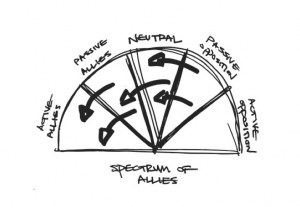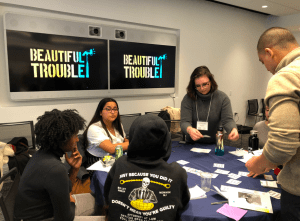Shaniya Francis on the Debating for Democracy Conference
By Shaniya Francis, Student Outreach Coordinator
On February 28th I was invited to the Pace University New York City campus to attend the Debating for Democracy Conference, a workshop for students from many different schools hosted by Project Pericles to promote civic engagement and effective advocacy. I had the opportunity to meet and work with many different students and faculty.
During this conference we had mini activities where we were able to apply tactics and principles to our made up protests. For example, we were supposed to think of a time where we have participated in a protest or any acts of activism and reenact it. This time we were required to break down how we approached each situation and what tactics we used to achieve our goal. I was able to speak to others about activism thoroughly and share my experiences. The speaker, Nadine Bloch, gave us a closer insight on tools that we unknowingly used to organize our protest. She was very engaging and gave an excellent presentation. She talked about many ways that activists should approach activism through the tools presented in Beautiful Trouble.
Beautiful Trouble is basically a crash course for activism. It is a toolbox for revolution. Throughout the event we used the Beautiful Trouble Card Game to assist us in our mini activities. For example, we were split into groups where we chose three cards from the deck and we would show some sort of activism based on those cards. The three types of cards that could be chosen were tactics, principles, and theories. The tactic cards demonstrate specific forms of creative action, such as a flash mob or blockade. Principle cards are hard-won insights that can guide or inform creative action design. Theories are the big-picture concepts and the ideas that help us understand how the world works and how we should go about changing it. We were forced to be strategic in a short amount of time to create the most effective protest to engage our audience.
I was really impressed by the tools presented in the conference. I especially appreciated the presentation about shifting the Spectrum of Allies. This principle is a diagram that creates organization when determining who an ally is and how to work with them. I learned that activists are good at analyzing systemic social problems, but we don’t do well with thinking systematically about how to actually organize them. Usually when approaching allies we think that we should just reach out to people we know will definitely be interested in participating. That number is usually small.
Activism is about using your power to make a change. We have to be able to empower our participants.
The spectrum helps to think in terms of groups. Being able to see a society in terms of specific networks such as unions and schools, and seeing others who are less visible or cohesive, such as subcultures or demographic groupings is very important when determining who are our allies. Analyzing your spectrum of allies can help you to identify and mobilize the networks around you. This is the most important strategy when it comes to interaction.
Project Pericles has opened my eyes to how I can organize my own protests effectively and how to actually think like an activist. Before, everything I was morally motivated but had no clear agenda on how to approach my goals, but now I have the tools to think like a true revolutionary!






